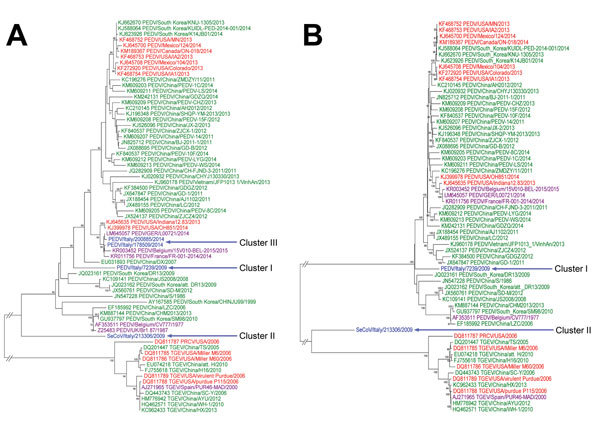Volume 22, Number 1—January 2016
Dispatch
Porcine Epidemic Diarrhea Virus and Discovery of a Recombinant Swine Enteric Coronavirus, Italy
Figure 1

Figure 1. Phylogenetic analyses of swine enteric coronaviruses in Italy. A) Analysis performed on the basis of the nucleotide sequence of the complete spike (S1) gene of 4 representative strains from the 3 clusters and B) whole genome of 2 positive strains from clusters I and II. Cluster I represents strains circulating from 2007 through mid-2009; cluster II represents strains circulating from mid-2009 through 2012; and cluster III represents strains circulating since 2014. Bootstrap values >70% (1,000 replicates) are indicated. Reference sequences are identified by GenBank accession no. and strain name. The strains from this study are represented in blue; strains from China are green; strains from North America are red; and strains from Europe are purple. PEDV, porcine epidemic diarrhea virus; PRCV, porcine respiratory coronavirus; TGEV, transmissible gastroenteritis virus; SeCoV, swine enteric coronavirus.
1These first authors contributed equally to this article.
2Deceased.